Usability can be described as the capacity of a system to provide a condition for its users to perform the tasks safely, effectively, and efficiently while enjoying the experience. In other words, an application or a system provides a great user experience only if it is satisfactorily usable.
Now, usability can encapsulate how the user is navigating through the site, if he/she is able to use specific features effectively or not, if the application has the desired effect on the user etc. In a lot of cases it also covers the content & the content strategy itself. This means that how the content is being rendered, consumed, and eventually proves beneficial to the user who interacts with the system.
Content, when done well, can form a very strong basis for user experience. A good looking site might entice the user to check it out but he/she is more likely to stay when the content and its structure has also been done well while keeping in mind the user needs, just like its design.
In this article, let us then, look at how the content strategy can be formulated keeping in mind some of the key design thinking principles.
Why do we need it?
While collecting data as a group is important, usually the details are lost because the insights are generalized. An insight suggesting “75% new users on the site” is helpful, but it becomes way more informative if we know that “55% of those users were from the APAC region”.
So, in our audits for one of our clients, we defined metrics based on how such different user groups interact with the application. It helped in rationalizing:
- Discoverability
It is the degree of ease with which the user can find all the elements and features of a new system when they first encounter it.
- Signifiers
It refers to any mark or sound, any perceivable indicator that communicates appropriate behavior to a person.
- Relevancy
Identify content relevance & customer preferences.
- Anomalies
The practice can help Iterate Information architecture & remove any gaps in how the information needs to be presented.
User-Centered Content Strategy Approach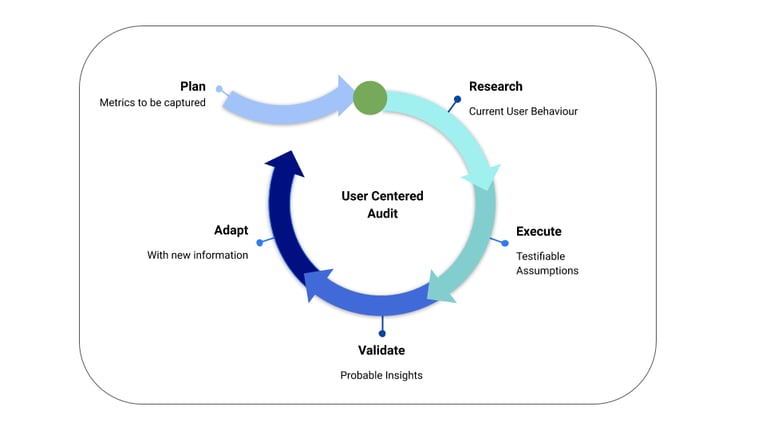
How do we do it?
Here is how you can apply the strategy in a simple 3-step method where we Identify, gather and then report our observations to the client/stakeholders. These ideally form the basis of any strategy process but a lot of us tend to ignore and try and jump to the solutions. While identifying refers to understanding the purpose and behaviour of the user, gathering refers to the proper utilization of the tools to capture these aspects. All these three steps are helpful in getting useful insights and are described in detail.
-
Identify
- Identify the business objectives. Defining end goals, hygiene parameters, and qualifying criteria for success is the first step to ensure we focus on what is needed. When we focus on the pain points, we find pointed solutions.
- Identify Personas. In a lot of cases these personas might already be available from a discovery workshop or at the start of the project requirements gathering. Whether you get it earlier or identify it later, personas are needed to keep our focus on majority users and their interactions. We do not want to (yet) solve for edge cases and scenarios which don't give us much in return.
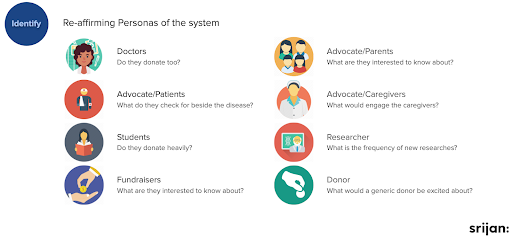
- Identify user journeys associated with the personas. This helps us figure out how the users are likely going to interact with our system. Like in the previous case, these may already be identified in previous engagements but in case you don't get it in documentation then stakeholders can help you identify how they perceive their system to be interacted with. You will be surprised how accurate they are, in a lot of cases.
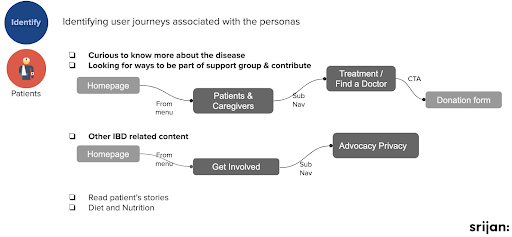 Make sure that you are also defining ROI journeys after all journeys have been laid out. Imagine concentrating on improving how articles are consumed when the need is to increase/improve conversion rate!
Make sure that you are also defining ROI journeys after all journeys have been laid out. Imagine concentrating on improving how articles are consumed when the need is to increase/improve conversion rate! - Identify behaviour & preferences. While personas give us a way to know ‘who’ is consuming the content & journeys tell us the ‘how’, we should also be interested in ‘why’. Same content can be consumed by different users with different motives. These motives can be as different as casual viewing to research, from sports heavy to politics only, from quick bites to in-depth analysis. When we understand those preferences, our solutions will then likely be more accurate.
- Identify sources of data. CRMs, DBs are the usual sources as well as analytics & heat mapping tools are what gives us useful insights.
- Gather
- Integrate tools, record, scrub & analyse data. All the tools identified earlier need to be integrated and set up before we embark on analysing the data. What needs to be taken care of is that we use the right tools & set it up correctly.
- Competitor research and performance evaluation. While our application might be the richest source of data, combining it with competitor research gives insights into the question “what else is possible?”. We don't need to rack our brains all along. Take help from what pioneers & competitors are already doing. Best practices in an industry also helps us understand if we are making glaring mistakes.
- Report
- Assessment report for the existing platform. First report that should go out is the understanding of the current platform. Set the baseline - where we stand currently is important to understand so that we can define success parameters correctly.
- Insights reports. Supplement your baseline with industry reports & industry guidelines for the assessed solutions. It helps to re-establish what all we can achieve with our solutions or what solutions will work best.
- Recommended solutions. Provide the best suited for the identified business requirements. Keep these in mind when recommending the solutions. Ensure your solution answers these three questions:
- Are those targeted towards the identified audience?
- Are those helping to solve the right pain points?
- Are those following best practices (or in some cases breaking the norms innovatively)?
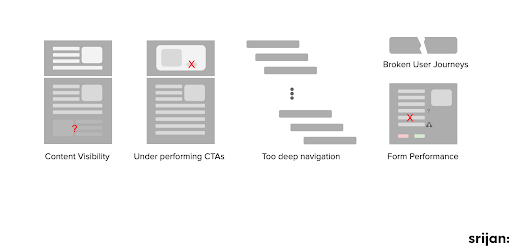 What benefits does the business get out of this?
What benefits does the business get out of this?
- One of our clients could improve the registrations across all devices by about 30% after we helped them understand the importance of placement of Call to Actions (CTAs).
- In another exercise, about 93% of all users for the time period identified, entered their email addresses to subscribe to a newsletter after we placed it appropriately.
- Content usage patterns by different personas, for a large foundation based out of New York, has been able to tell us that an app might be a great way for them to engage the users more.
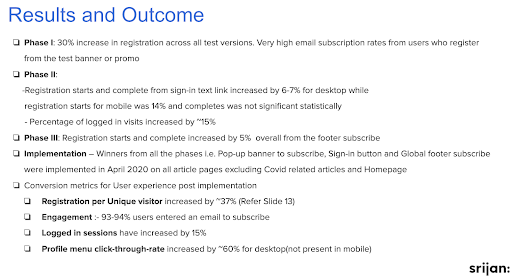 When users get the kind of desired experience and right content, they engage with the application more and stay on the site for relevant information. The businesses then benefit with the increased user engagement by generating more leads, direct/indirect revenue & an upwards increase in overall reputation!
When users get the kind of desired experience and right content, they engage with the application more and stay on the site for relevant information. The businesses then benefit with the increased user engagement by generating more leads, direct/indirect revenue & an upwards increase in overall reputation!
Our Services
Customer Experience Management
- Content Management
- Marketing Automation
- Mobile Application Development
- Drupal Support and Maintanence
Enterprise Modernization, Platforms & Cloud
- Modernization Strategy
- API Management & Developer Portals
- Hybrid Cloud & Cloud Native Platforms
- Site Reliability Engineering




